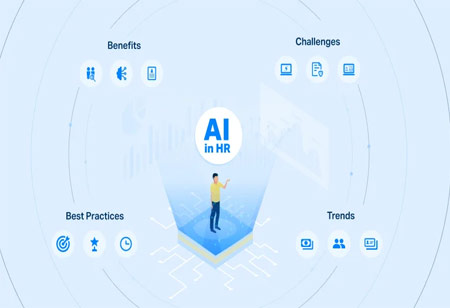THANK YOU FOR SUBSCRIBING
Be first to read the latest tech news, Industry Leader's Insights, and CIO interviews of medium and large enterprises exclusively from Hrtech Outlook
THANK YOU FOR SUBSCRIBING

By
HR Tech Outlook | Tuesday, August 26, 2025
Stay ahead of the industry with exclusive feature stories on the top companies, expert insights and the latest news delivered straight to your inbox. Subscribe today.
FREMONT, CA: In today’s business environment, workforce planning is evolving as organizations use data-driven insights to enhance talent management and achieve business success. Traditional methods of workforce planning, which relied on intuition and historical data, are giving way to more advanced analytical approaches that utilize real-time data and predictive analytics.
Data-driven insights have proven critical to enhancing organizational decision-making and performance. Research highlights their impact, with PwC reporting that organizations leveraging data-driven strategies are three times more likely to achieve significant improvements in decision-making. Similarly, 81 percent of businesses believe data should be central to all decision-making processes. However, despite the potential of these insights, many leaders continue to rely more heavily on experience and advice, with 62 percent of executives still favoring traditional methods over data-driven approaches.
The Need for Strategic Workforce Analytics
Adopting strategic workforce analytics arises when organizations encounter persistent challenges in managing their workforce. Rising attrition rates, difficulties predicting resignations, and lacking budget clarity in people-focused investments can hinder workforce stability and efficiency. By integrating workforce analytics, organizations transition from reactive problem-solving to proactive planning, enabling them to address current challenges while preparing for future demands. This data-driven approach ensures a more resilient and strategically aligned workforce.
Advancing Workforce Planning with GenAI-Powered Solutions
Workforce planning has expanded significantly with the advent of data analytics, transforming it from a reactive function into a proactive strategy. Organizations that adopt these innovations benefit from improved employee engagement, reduced turnover, and a future-ready workforce. By integrating GenAI-powered platforms, organizations can gain actionable insights that drive strategic decision-making. These platforms provide detailed analytics, such as module-wise reports, completion ratios, and time-spent metrics, offering HR and L&D teams a clear understanding of skill development across the workforce. This visibility allows for real-time adjustments to training programs, ensuring that learning initiatives align closely with organizational goals while addressing specific skill gaps effectively.
Accurate Talent Forecasting: With advanced workforce analytics, organizations can forecast talent needs more precisely. By analyzing employee skills, performance metrics, and training completion rates, HR and L&D leaders can predict future skill demands. For example, if data reveals growing expertise in machine learning, organizations can anticipate a need for roles in generative AI (GenAI) and adjust recruitment and development strategies accordingly. This proactive approach ensures businesses are prepared for evolving market demands and technological shifts.
Designing Targeted Training Programs: Low engagement in training programs is often caused by a lack of relevance. Data-driven workforce planning helps address this by identifying areas where employees require improvement and tailoring training to those needs. Organizations can design training sessions that directly target skill gaps by reviewing data on course completions, module time spent, and assessment outcomes. This enhances training effectiveness and boosts employee engagement by making the programs more relevant and aligned with organizational goals.
Pinpointing the Root Causes of Employee Turnover: Data-driven insights provide organizations with the tools to identify the root causes of high employee turnover. By analyzing training engagement, performance metrics, and employee feedback, businesses can uncover key factors contributing to resignations. For example, if employees with insufficient training are more likely to leave, addressing these gaps with targeted interventions—such as improving training quality or offering more support—can reduce turnover. This approach fosters a more engaged, satisfied workforce, contributing to long-term retention and success.
By adopting advanced workforce analytics, businesses can forecast talent needs, design targeted training programs, and address the root causes of turnover, ensuring they are equipped to meet future challenges. The integration of GenAI-powered solutions further enhances this process, providing actionable insights that align with organizational goals and skill demands. As businesses prioritize data-driven approaches, they will improve their workforce management and drive sustained growth and success in an increasingly competitive environment.



